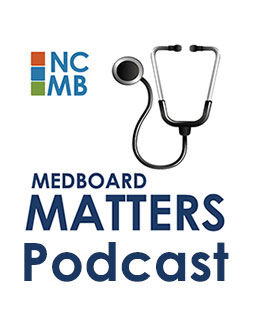Position Statements
4.1.3: Policy for the Use of Opioids for the Treatment of Pain
Adopted: Sep 1996 | Amended: Sep 2023 Print Friendly Version | Share this itemThe Board believes that a fundamental component of good medical practice includes the appropriate evaluation and management of pain. Responsibly prescribed opioid medications may help North Carolina licensees treat their patients’ pain safely and effectively, potentially improving their quality of life. It is the duty of any licensee prescribing opioid medications to be knowledgeable of both the therapeutic benefits, risks, and potential harm associated with opioid treatment as well as adjunctive or treatment alternatives to opioids for management of pain. The Board expects any licensee prescribing opioids for the treatment of pain to provide diagnoses, treatments, and medical record documentation that are consistent with the standard of care in North Carolina. The Board notes that a failure to provide opioid treatment consistent with the standard of care in North Carolina may subject a licensee to disciplinary action by the Board.
In order to provide licensees with guidance that reflects the most current medical and scientific research and recommended practices, the Board previously adopted and endorsed the 2016 CDC Guideline for Prescribing Opioids for Chronic Pain (“2016 CDC Guideline”) written and maintained by the Center for Disease Control and Prevention (“CDC”).
In 2022, the CDC updated its 2016 CDC Guideline. The 2022 CDC Clinical Practice Guideline for Prescribing Opioids for Pain (“2022 CDC Guideline”) provides additional guidance and emphasizes the following aspects of prescribing opioids for the treatment of pain in the primary care context: (1) providing individualized pain care in the setting of a complete assessment of the risks versus benefit of all available modalities including but not limited to opioids for the management of acute, subacute, and chronic pain; (2) incorporating patient input into the choice of the various modalities chosen to treat a given patient’s pain needs via shared decision-making; (3) maximizing multimodal therapies for a given patient’s pain care, which may lessen the need for opioid therapy; (4) refraining from abruptly discontinuing or rapidly tapering chronic opioid therapy for those patients already on long-term therapy; and (5) thoroughly documenting the decision-making process behind the initiation, continuation, or discontinuation of opioid therapy for any given patient.
While the 2016 CDC Guideline and the 2022 CDC Guideline do not constitute regulations or necessarily state the standard of care in North Carolina in every context, the Board’s believes that these guidelines can provide useful information to licensees related to the appropriate considerations to be made prior to, and during, treatment plans involving opioids. It is the Board’s hope that familiarity with the concepts included in the two CDC guidance documents will help licensees provide safe and effective care for their North Carolina patients.
